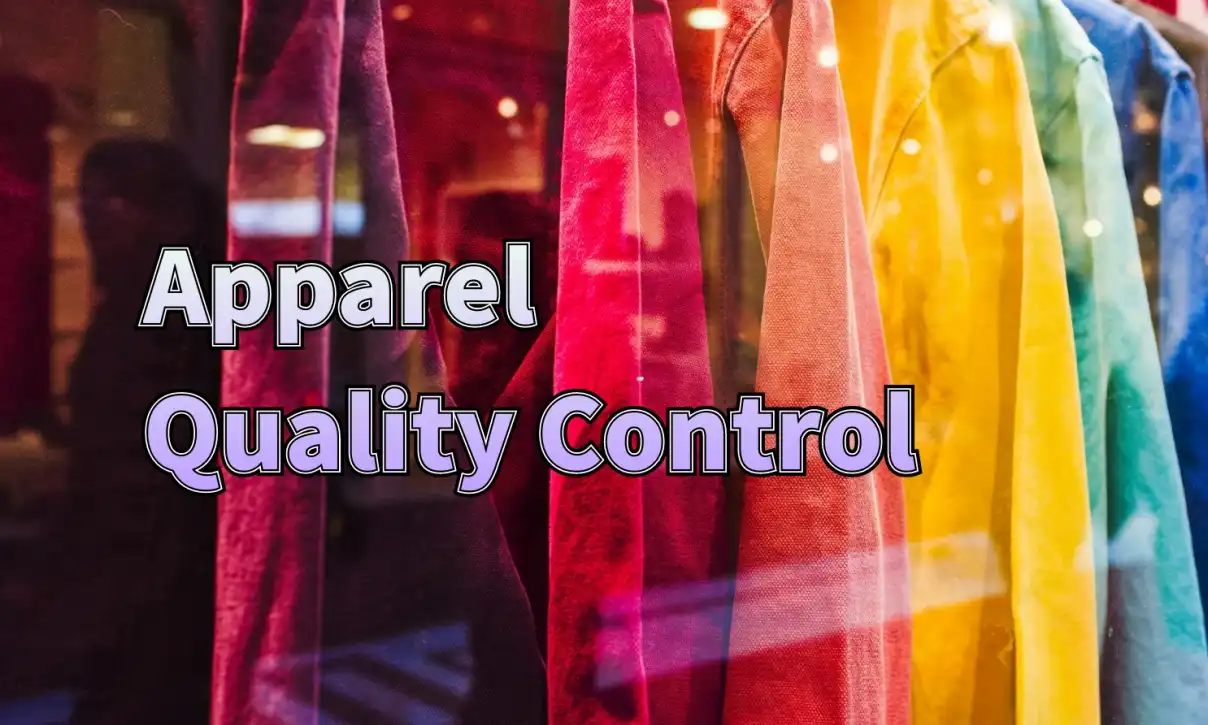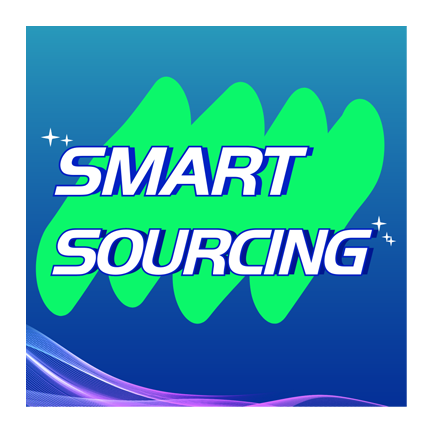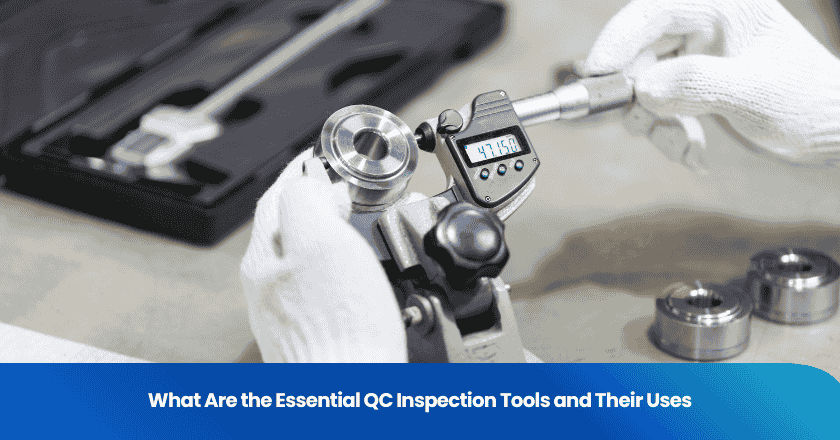
Quality control (QC) in the clothing industry ensures that clothing meets consumer expectations, reduces product returns, and maintains brand reputation. High-quality products not only enhance customer satisfaction but also ensure compliance with regulatory requirements. Maintaining consistent quality is challenging due to variations in raw materials, production processes, and supplier standards. Additionally, striking a balance between cost efficiency and quality poses a significant challenge.
1. Understand the basic concepts of garment quality control
Definition and purpose of garment quality control
Clothing quality control, as a crucial aspect of ensuring product quality, encompasses comprehensive and systematic inspection measures implemented at every production stage, from raw materials to the delivery of finished products.
The fundamental purpose of the process lies in ensuring that every garment product strictly meets the established quality standards and customer needs through rigorous supervision and evaluation, so as to stand out in the fierce market competition.
The core objective is to minimize product defects, whether they are minor imperfections or serious quality issues, ensuring that every product maintains a high degree of quality consistency during mass production, thereby enhancing brand credibility and consumer satisfaction.
Explanation of key components of the garment quality control system
Inspection: This stage serves as the foundation of quality control, involving detailed visual inspection and technical evaluation of products during and after the production process. Skilled professionals utilize advanced inspection tools to conduct meticulous inspections of various aspects of clothing, such as cutting, sewing, ironing, and packaging, in order to promptly identify and rectify any details that may affect the final quality of the product.
Testing: To further verify the performance and durability of clothing materials, the quality control system also includes laboratory testing and functional testing. These tests aim to scientifically evaluate key characteristics such as fabric strength, color fastness, shrinkage, breathability, and warmth retention, ensuring that the materials used meet product design requirements and industry standards, providing consumers with clothing products that are both aesthetically pleasing and practical.
Monitoring: As a continuous guarantee for the quality control system, the monitoring process emphasizes real-time tracking and evaluation of the entire production process. By installing monitoring equipment, conducting regular audits, collecting production data, and analyzing it, deviations and potential risks in the production process can be detected in a timely manner, and measures can be quickly taken to make adjustments, ensuring that production activities are always operated efficiently under the prescribed quality management system, effectively preventing the occurrence of quality problems, and ensuring the long-term stability and improvement of product quality.
2. Establish clear quality standards
In the global competition of the garment industry, establishing and strictly adhering to a series of internationally recognized quality standards is crucial to ensuring that products can transcend national boundaries and win widespread market recognition.
Among them, industry standards and authoritative certifications are crucial. For instance, ISO 9001 quality management system certification, as an internationally recognized quality management standard, provides a comprehensive and systematic framework for enterprises to continuously improve product quality, enhance customer satisfaction, and optimize internal management processes. Meanwhile, the adoption of the Acceptable Quality Level (AQL) standard defines the maximum defect ratio tolerable in sampling inspection for enterprises, providing a scientific and unified benchmark for quality control in mass production.
Adhering to these international standards helps enhance the global competitiveness of products, ensure consistency in quality across different countries and regions, and earn trust and respect in the international market.
In addition, the quality requirements specific to the brand should not be overlooked.
Each clothing brand possesses its unique brand philosophy, design style, and market positioning, which collectively shape the brand's specific expectations for product quality. Brands must meticulously devise a set of quality standards that align with both the brand's tone and market demands, based on their target market characteristics, design specifications, and deep insights into consumer expectations. These standards may encompass various dimensions such as fabric selection, sewing techniques, dimensional accuracy, color matching, durability testing, etc., ensuring that every aspect from design to production accurately conveys the brand's value and achieves high consistency and controllability in the production process.
By clearly defining and strictly enforcing these brand-specific quality requirements, enterprises can not only consolidate their brand image and enhance their market competitiveness, but also establish firm trust in brand quality among consumers, laying a solid foundation for the long-term development of the brand.
3. Implement an effective inspection process
Implementing a scientific and rigorous inspection process throughout the entire lifecycle of garment production is crucial for ensuring product quality and enhancing production efficiency.
This process starts at the source, beginning with rigorous inspections before production. During this stage, a professional quality inspection team conducts a comprehensive and meticulous evaluation of all raw materials, auxiliary materials, and initially produced samples. They carefully inspect key indicators such as material texture, color, and dimensional stability based on established quality standards and specifications, ensuring that the basic quality of mass production is solid and reliable, laying a solid foundation for the smooth progress of subsequent production processes.
With the initiation of the production line, quality inspection during the production process has become another crucial aspect in ensuring product quality. This step emphasizes real-time quality monitoring and inspection at various stages of production, such as cutting, sewing, and ironing, among other key points. By establishing multiple inspection points, quality inspectors can promptly identify and rectify any deviations and defects in the production process, effectively preventing the accumulation of issues that could lead to batch-wide quality problems. This approach reduces resource waste and production delays, ensuring the dual goals of maintaining production progress and controlling costs are met.
Finally, when the product successfully completes all production processes and enters the preparation stage before packaging and delivery, the Final Random Inspection (FRI) becomes the final line of defense to ensure that the overall quality meets the requirements. In this stage, a certain number of finished product samples are randomly selected for comprehensive and multi-level detailed inspections, including but not limited to appearance quality, sewing process, dimensional accuracy, functional testing, etc. Through the strict control of FRI, the company can ensure that each batch of products leaving the factory meets the established quality standards, satisfies consumers' expectations and trust, and provides a strong guarantee for the continuous improvement of brand reputation and the steady expansion of market share.
4. Utilize advanced testing methods
In the garment quality control system, employing advanced testing methods is crucial to ensuring superior product performance and meeting diverse demands.
Firstly, in the fabric and material testing phase, enterprises need to utilize high-precision testing equipment to rigorously measure the tensile strength of fabrics, ensuring that clothing can withstand the tensile stress caused by daily activities during wear and maintain stable shape. Simultaneously, the testing of shrinkage rate is crucial, as it aids enterprises in accurately assessing the dimensional changes of fabrics after washing. This enables them to make corresponding adjustments before production, guaranteeing the stability of finished product dimensions. Furthermore, a detailed analysis of fabric composition ensures that the materials meet environmental requirements, skin contact safety standards, and specific functional needs such as breathability and moisture absorption, providing consumers with a healthy and comfortable wearing experience.
Next, color fastness and durability testing is an indispensable part of evaluating fabric quality. By simulating conditions such as friction, washing, and exposure to light that may be encountered in daily wear, the test assesses the durability and stability of fabric colors, ensuring that the garments retain their vibrant colors after prolonged use or multiple washes, without fading or color bleeding. Additionally, durability testing also involves evaluating the fabric's resistance to wear and tear, ensuring that the clothing can withstand daily wear and tear, thereby extending its lifespan.
Finally, for clothing with specific functional requirements, such as sportswear and outdoor wear, functionality and performance testing are particularly important. These tests may include elastic recovery tests to verify whether the clothing can quickly return to its original state after being stretched; water resistance tests to ensure that the clothing maintains good warmth or breathability in wet environments; and thermal insulation performance tests, which are especially crucial for clothing that needs to withstand extreme temperature environments. Through this series of rigorous and comprehensive tests, companies can ensure that the produced clothing not only meets basic quality standards but also satisfies consumers' high standards for functionality and comfort, standing out in the fierce market competition and winning the favor and trust of consumers.
5. Utilize technology to achieve quality assurance
In the field of quality control in the garment industry, technological innovation is spearheading an unprecedented transformation.
The introduction of automated quality control tools has injected momentum into enhancing the precision and efficiency of product quality inspection. Tools such as visual inspection systems, leveraging their high-precision image recognition technology, can swiftly and accurately detect subtle quality issues like fabric defects and sewing errors, ensuring that every product meets flawless standards. The application of robotic testers has further expanded the scope of quality control, enabling automated and standardized operations for both physical property testing of fabrics and durability evaluation of finished products, significantly enhancing the objectivity and reliability of inspection.
In addition, the role of data analysis in the quality assurance system cannot be underestimated. By conducting in-depth mining and analysis of the vast amount of quality-related data accumulated during the production process, enterprises can gain insights into the quality trends and potential issues hidden behind the data. Decision support based on data not only helps to promptly identify and correct recurring quality issues, optimize production processes, and reduce waste, but also enables the early identification of potential defect points through predictive maintenance. By taking preventive measures before problems occur, it ensures the continuous stability and improvement of product quality.
6. Train and empower your team
To build a truly professional and efficient quality assurance team, we must pay attention to every detail, from personnel selection to skill training, and then to practical application. Every step is indispensable.
A team that has undergone rigorous training and is well versed in the essence of quality control can accurately and flawlessly implement the established QC (quality control) protocol. Furthermore, when faced with various complex quality issues, they can quickly respond and provide effective solutions, ensuring that every aspect of the product or service meets the highest standards.
To achieve this goal, we once again emphasize the importance of a continuous training program. In this rapidly changing era, the standards, tools, and methods of quality control are constantly being updated and iterated. Therefore, we must ensure that our team can keep pace with the times and continuously absorb and master these latest knowledge and skills through regular and systematic training. Such training is not limited to theoretical knowledge, but also includes diversified forms such as practical operations and case analysis, aiming to comprehensively enhance the professional quality and practical ability of team members.
Through such continuous training and empowerment, we create a cultural atmosphere within the team that pursues excellence and advocates quality. This makes every member deeply aware that quality is not only the lifeblood of products, but also the cornerstone of corporate credibility and competitiveness. Only in this way can our quality assurance team stand out in the fierce market competition and become a strong backing for the steady development of the enterprise.
7. Collaborate with reliable third-party quality control providers
In this era where quality is paramount, establishing a partnership with a professional and reliable third-party quality control provider is undoubtedly a crucial step for enterprises to enhance product quality and bolster market competitiveness.
Third-party inspection services are renowned for their professionalism and impartiality. They not only possess profound industry knowledge and rich practical experience, but also ensure that the entire inspection process strictly adheres to industry standards and regulatory requirements, providing enterprises with an objective and accurate inspection report.
However, how can one select the most suitable partner among numerous third-party quality control providers?
This requires us to consider comprehensively from multiple dimensions.
Firstly, reputation serves as a crucial basis for judging the reliability of a provider. A provider with a positive reputation and a broad customer base often signifies that its service quality and professionalism have been widely recognized by the market.
Secondly, the scope of service is also a factor that cannot be ignored. Enterprises need to clarify their quality control needs and select a provider that matches them. Whether it is product inspection, process control, or supply chain management, the provider should possess comprehensive service capabilities and flexible service solutions to meet the diverse needs of enterprises.
Furthermore, technical capability is an important indicator to measure the strength of a provider. This includes the progressiveness of its inspection equipment, the scientific nature of its testing methods, and the professionalism of its technical team. Only with strong technical capabilities can the accuracy and reliability of inspection results be ensured.
Lastly, transparency in reporting is also a crucial factor to consider when selecting a partner. A clear, detailed, and transparent inspection report can not only assist enterprises in promptly understanding the quality status of their products but also provide robust data support for subsequent improvements and enhancements.
When selecting a third-party quality control provider, we should focus on the standardization and transparency of their report writing to ensure that the information obtained is authentic, reliable, and valuable.
END
Effective garment quality control (QC) requires clear standards, systematic inspections, advanced tools, and a skilled team.
Collaborating with reliable third-party providers can further enhance quality assurance.
A robust QC process reduces defects, enhances customer satisfaction, and bolsters market reputation, ensuring the long-term success of garment manufacturers.

Smart Sourcing & Quality Assurance Content Team
Article by Smart Sourcing & Quality Assurance Content Team
The Smart Sourcing & Quality Assurance Content Team is dedicated to delivering high-quality, easy-to-understand information that empowers our audience to navigate the complexities of global sourcing and quality assurance. Our team of writers has extensive experience in creating content across various fields, including procurement, supply chain management, quality assurance, market trends, and industry best practices. We specialize in sectors such as apparel, textiles, and consumer goods, providing targeted insights to help businesses in these industries optimize their sourcing strategies, ensure product quality, and maintain a competitive edge in the market.
Grow your business with TradeAider Service
Click the button below to directly enter the TradeAider Service System. The simple steps from booking and payment to receiving reports are easy to operate.



